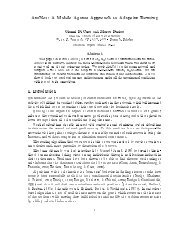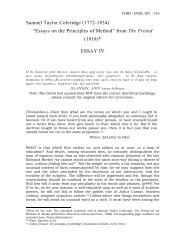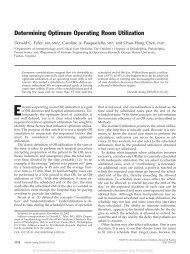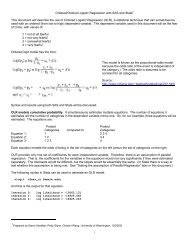Case 28. Klinefelter Syndrome
Case 28. Klinefelter Syndrome
Case 28. Klinefelter Syndrome
Create successful ePaper yourself
Turn your PDF publications into a flip-book with our unique Google optimized e-Paper software.
<strong>Case</strong> <strong>28.</strong> <strong>Klinefelter</strong> <strong>Syndrome</strong><br />
<strong>Klinefelter</strong> syndrome is suspected in males with developmental delay,<br />
hypogonadism, gynecomastia, or infertility. It is likely that many males with<br />
47,XXY remain undiagnosed.<br />
<strong>Case</strong> <strong>28.</strong> A 14-Year-Old Boy: the Clinical Utility of a<br />
Diagnosis of <strong>Klinefelter</strong> <strong>Syndrome</strong><br />
Your patient Ronnie P started having difficulties in school when he was eight<br />
years old. His teacher noted that he seemed to be irritable and impulsive;<br />
she raised the possibility of attention deficit disorder. In addition, Ronnie was<br />
noted to have mild difficulties with spelling and composition. Although he<br />
was requiring some additional help with these tasks, his IQ was normal<br />
(104) and he had been progressing academically with his peer group. He<br />
was tall for his age (95th percentile in height). He had no physical or medical<br />
problems. A detailed evaluation by a psychologist revealed some impulsivity,<br />
but insufficient findings to support a diagnosis of attention deficit disorder.<br />
Tutoring was arranged, and he continued to progress adequately in school.<br />
At age 14 years, he develops gynecomastia. At this point, he is seen by an<br />
endocrinologist who raises the question of <strong>Klinefelter</strong> syndrome, because of<br />
the combination of gynecomastia and small testes. A chromosomal study<br />
reveals a 47,XXY karyotype.<br />
Clinical Care Issues<br />
<strong>Klinefelter</strong> syndrome<br />
The diagnosis of <strong>Klinefelter</strong> syndrome is based on the presence of at least<br />
one extra X chromosome, in the presence of a Y chromosome. The most<br />
common form of <strong>Klinefelter</strong> syndrome is due to a 47,XXY karyotype and is<br />
found in about 80% of cases, but can also be due to variant karyotypes,<br />
such as 48,XXXY, 48,XXYY, 49,XXXXY, and 47,XXY/46,XY mosaicism<br />
[Lanfranco et al 2004]. The prognosis of individuals with variant karyotypes<br />
can be different from the prognosis of 47,XXY individuals. Some geneticists<br />
reserve the term "<strong>Klinefelter</strong> syndrome" for symptomatic adolescents and<br />
adults, and refer to fetuses, newborns, or children without symptoms as<br />
having 47,XXY.<br />
http://www.genetests.org/servlet/access?id=8888892&...&filename=/tools/cases/klinefelter-28/content.html (2 of 7) [3/4/2009 1:23:07 PM]
















